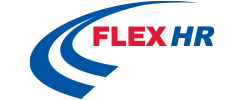Helping Businesses Navigate the COVID-19 HR Challenges
 Ten months into the COVID-19 pandemic, companies are under unprecedented stress with challenges to keep their business afloat and their employees safe and productive.
Ten months into the COVID-19 pandemic, companies are under unprecedented stress with challenges to keep their business afloat and their employees safe and productive.
In spite of the barrage of federal and state attempts to provide assistance to small and medium size companies, the daily dissemination of conflicting information about the pandemic, and the pressures placed on management by their employees for guidance and direction concerning their job security and health in the workplace; many employers are struggling to make appropriate and sound decisions to successfully guide their company through this difficult period. Thus, Human Resource experts have never been more valuable than right now to help navigate these varying new work environments.
Under these conditions that show no signs of abetting in the near term, company leaders are re-examining changes to their internal operational policies and procedures. Additionally, the structural deployment of human resources is vital to organizations in an attempt to adapt to these continuously altering conditions. Some of these variations include among others:
- Develop work-from-home policy mandatory for certain employees and positions
- Consider split-shift and rotating schedules
- Remote orientation of new employee to the company
- Increased deployment of virtual training technologies to increase competency levels
- Health screening procedures for employees and visitors in the workplace
While many of these changes may be desirable and necessary, prudent caution should be exercised when considering these actions. Sanctioning the proper HR expertise is more important now more than ever to successfully strategize and manage the modifications of new office policies. Businesses around the nation are trending towards outsourcing their human resources. Companies like Flex HR, Inc., a full-service HR firm based out of the Atlanta, GA area, oversee these adaptable transitions all while mitigating possible liability risks for the employer. HR professionals have become significant leaders of positive change; inventing new ways to work, altering job functions, developing new learning and communication methodologies.
When implementing updated policy changes it is important to deliberate the impact of the change on compliance requirements already in force. For example, if you institute a health screening policy designed to keep the workplace safe for employees, be sure the policy does not violate HIPAA guidelines. If you consider mandating work-from-home policies, be sure to include procedures that provide for liability protection for the company.
Further complicating these challenges are the alterations and additions to federal and state regulatory requirements that will most certainly follow the implementation of business assistance programs. New OSHA, FLSA, IRS, HIPAA and EEOC rules associated with COVID-19 continue to have an impact on business operations. It’s critical for business leaders to take measured strategic action to address these challenges to their business. Small to medium size companies are confronting two major complexities daily: how to keep their employees and workplace safe and productive, and how to deploy their available resources to maintain business operations.
Employee and Workplace Safety
By far the greatest issues facing corporate leadership during the pandemic is the protection of employees and the workplace. Employees are scared to come back into the office, afraid they may contract the virus or worse bring the virus home to their family. Therefore, companies must develop detailed procedures that keep the workplace as free of the virus as possible including sanitizing all workspaces and surfaces, hand sanitizer throughout the office, health screening procedures for both employees and visitors, as well as assigned responsibility to ensure procedures and policies are enforced and documented.
It is critical that employers maintain communication outlining what actions the company is taking to keep their staff safe. Communication efforts should include, but are not limited to:
- Set up regular weekly management communication to employees regarding safety policies and actions the company is taking to keep the workplace safe
- Invite employees to share their concerns and recommendations with the company verbally and in writing
- Create a Q&A mechanism where employees can ask, receive, and share issues and concerns as well as receive the same information on answers shared with them
Overall, the more accurate and uniform information shared with employees the more productive the employee workforce will be.
Re-engineering Workforce Deployment
If employers are contemplating re-engineering or restructuring workforce deployment, it is important to do so by considering the integration and interdependence of the following reengineering guidelines. Re-engineering and workforce restricting can include work-from-home mandates, job restructuring or redesign, departmental reorganization, career track restructuring, compensation adjustments or position reclassification. Foremost among management’s consideration is ensuring key change management initiatives are well conceived and well implemented. Phil Davis, SVP of Flex HR, notes “HR needs to play a major role when change management methodologies are being determined. Companies call on me to support leadership and upper management, ensuring their teams are communicating these efforts properly.”
HR Guideline considerations include:
- Cost/Benefit Assessment Protocols
Assessment protocols should be defined prior to instituting any modification to determine if the planned benefit resulting from the change is worth the costs in human as well as monetary terms.
- Productivity and Performance Metric Realignment
When deviations are considered in the job responsibilities, supervision reassignment and/or primary work location, attention should be given to realigning performance and productivity metrics in consultation with the employee.
- Policy and Guideline Considerations
Whenever redeployment of employees, responsibilities or performance metrics are undertaken, all affected policies and procedures should be reviewed for required changes in employee handbooks and communicated to all employees.
- In-house and Remote Training Requirements
When making structural changes that impact the training and development of employees, it’s important to confirm that the requisite communication and training technology is available, and employees know how to use it.
- Compliance Issue Management
All changes considered should be reviewed against any potential violation of compliance requirements, ensuring compliance issue management and clarification be conducted prior to implementing any adjustments.
- Corporate Management and Governance
Any re-engineering fluctuations that may require reexamination of corporate governance issues or modifications should be resolved prior to initiating the change action.
Engaging business complexities is perplexing enough without the added burden of doing so during a pandemic. Dr. John Cascone, SVP at Flex HR, has commented “many CEOs are reaching out for guidance in an effort to provide sound direction to their management team and employees to keep them safe and productive during this critical period.” Leadership is continually challenged with making effective and balanced decisions for both staff and the organization. Simultaneously all while trying to enforce the company’s core values and safeguarding the well-being of employees. To ease the burden of management, Flex HR experts have created “helpful tips for managing the Coronavirus crisis” online, specifically addressing COVID-19 business impact concerns. For checklists, sample return to work letters, and other essential information for having your staff return to work, contact Flex HR now.
Flex HR specialists serve thousands of different organizations, in countless industries, with company sizes varying from a few to over 75,000 employees. They offer many levels of services including HR consulting, outsourcing (HRO), compliance, recruiting & talent acquisition, training & development, and onboarding administration.
Flex HR serves almost every industry in all 50 states, including Georgia, Florida, California, North Carolina, and Tennessee, as well as Puerto Rico, the Virgin Islands, Canada and Europe supporting U.S. subsidiaries of foreign owned companies.
To Learn More about Flex HR Contact Us.
* Statistics and government guidance are rapidly changing. This is the most updated information as of the morning of 4/24/20. Small business is defined as under 500 employees.



